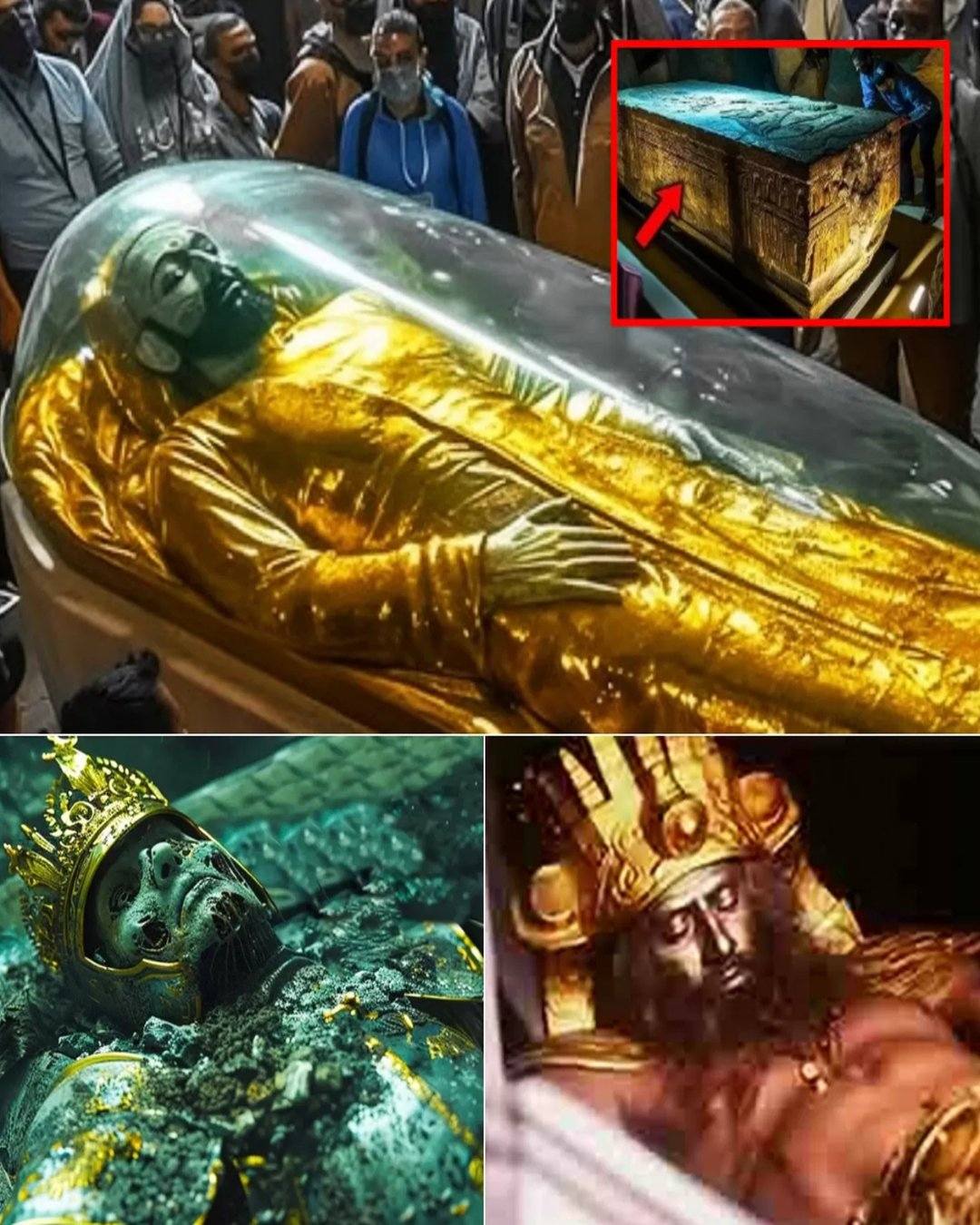Discovered: The 12,000-Year-Old Tomb of an Anunnaki King Unearthed

In a revelation that has sent shockwaves through the archaeological and scientific communities, researchers have reportedly unearthed what may be the 12,000-year-old tomb of an ancient Anunnaki ruler — a find that, if verified, could rewrite the history of human civilization. The discovery, made deep beneath a desolate region once part of ancient Mesopotamia, includes a monumental burial chamber filled with metallic artifacts, cryptic inscriptions, and a sarcophagus unlike anything ever documented. This stunning revelation bridges the gap between myth, archaeology, and the enduring question of humanity’s true origins.
The Tomb and Its Enigmatic Contents

Preliminary reports describe a vast subterranean complex carved from solid rock, featuring walls engraved with unfamiliar symbols and reliefs depicting celestial bodies and winged figures. At its center lies a massive sarcophagus composed of an advanced metallic alloy that defies known ancient metallurgical capabilities. Scattered around the chamber are mysterious tools and devices that appear far more sophisticated than anything expected from a civilization predating recorded history.
Archaeologists are cautiously analyzing the artifacts, working alongside experts in metallurgy, linguistics, and ancient history. Early analyses suggest that some inscriptions bear resemblance to Sumerian cuneiform, yet display variations not seen in any known language. The site’s precision engineering and material composition have fueled debate over whether this civilization possessed knowledge or technologies that have since been lost — or possibly introduced from beyond Earth.
The Anunnaki Legend Revisited
The Anunnaki, often described in ancient Mesopotamian texts as “those who came from the heavens,” are central to some of humanity’s oldest myths. Traditionally viewed as deities who brought wisdom and civilization to early humanity, the Anunnaki have also been at the heart of ancient astronaut theories — suggesting that advanced visitors may have played a role in shaping early human development.
This new discovery has reignited global fascination with those legends. Could the tomb truly belong to one of these mysterious beings, or does it represent an advanced but forgotten human culture that existed millennia before Sumer, Egypt, or Indus Valley civilization? While skeptics urge caution, the extraordinary craftsmanship of the site and artifacts leaves even seasoned researchers astonished.

Divided Opinions Among Experts
The discovery has sparked both excitement and skepticism in equal measure. Some scientists insist that extraordinary claims require extraordinary evidence, emphasizing the need for rigorous dating and verification. Others argue that the sheer complexity of the site — coupled with the artifacts’ unknown composition — warrants serious reconsideration of accepted timelines of human advancement.
Regardless of interpretation, the tomb’s existence challenges established narratives about the dawn of civilization. Its potential age, symbolism, and engineering sophistication point to a period of human history that remains largely unexplored — one that may bridge myth and historical reality.
Conclusion
The alleged 12,000-year-old tomb of an Anunnaki king is one of the most intriguing archaeological claims of modern times. Whether it represents a lost chapter of human innovation or evidence of a civilization beyond comprehension, the discovery invites us to question the boundaries between history, myth, and the unknown. As experts continue to study the site, the world watches with anticipation, awaiting answers that may forever alter our understanding of where we came from — and who may have walked the Earth before us.











